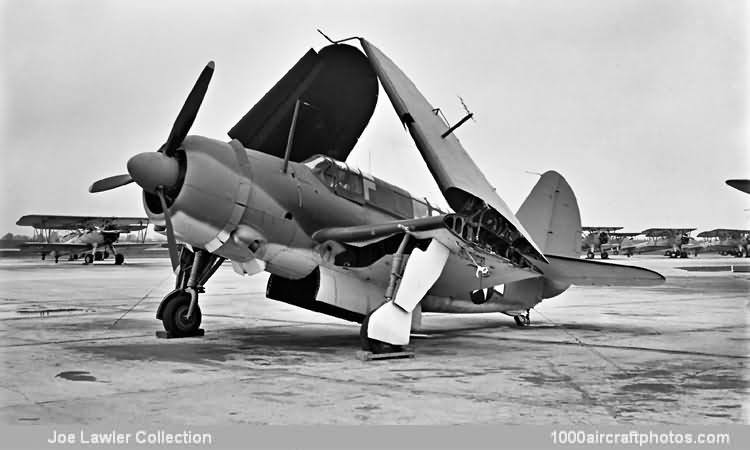02/28/2010. Remarks by Johan Visschedijk: "The long series of Curtiss combat aircraft built for the USN and USMC between the two world wars was brought to a highly successful conclusion with the company's first monoplane bomber and the last to carry the name Helldiver.
Ordered on May 15, 1939, while the earlier Helldiver biplane was still in quantity production, the new type was a low-wing monoplane with the same general layout as the Brewster SB2A Buccaneer, with which it was in competition. It was a two-seat scout-bomber powered by the big 1,700 hp Wright R-2600-8 Double Cyclone engine, and had an internal bomb-bay in the fuselage.
The prototype XSB2C-1 made its first flight on December 18, 1940, but was destroyed a few days later. Large-scale production had already been ordered on November 29, 1940, but a large number of modifications were specified for the production model. The size of the fin and rudder was enlarged, fuel capacity was increased and self-sealing added, and the fixed armament was doubled to four 0.50 in (12.7 mm) guns in the wings, compared with the prototype's two cowling guns.
Curtiss established a new factory for SB2C production at Columbus, Ohio, and the first production model did not fly until June 1942. After the first 200 SB2C-1s, fixed armament was again changed to a single 0.787 in (20 mm) cannon in each wing, in the SB2C-1C version; in addition the Helldiver had two 0.30 in (7.62 mm) guns in the rear cockpit, and an internal bomb load of 1,000 lb (454 kg).
Production at the new Columbus factory was protracted, and, although deliveries to VS-9 began in December 1942, 11 more months elapsed before the type had been brought up to operational effectiveness and was ready for action. The first operational sortie was made on November 11, 1943, when VB-17 attacked Rabaul, New Guinea. Production of the SB2C-1 totaled 978."
